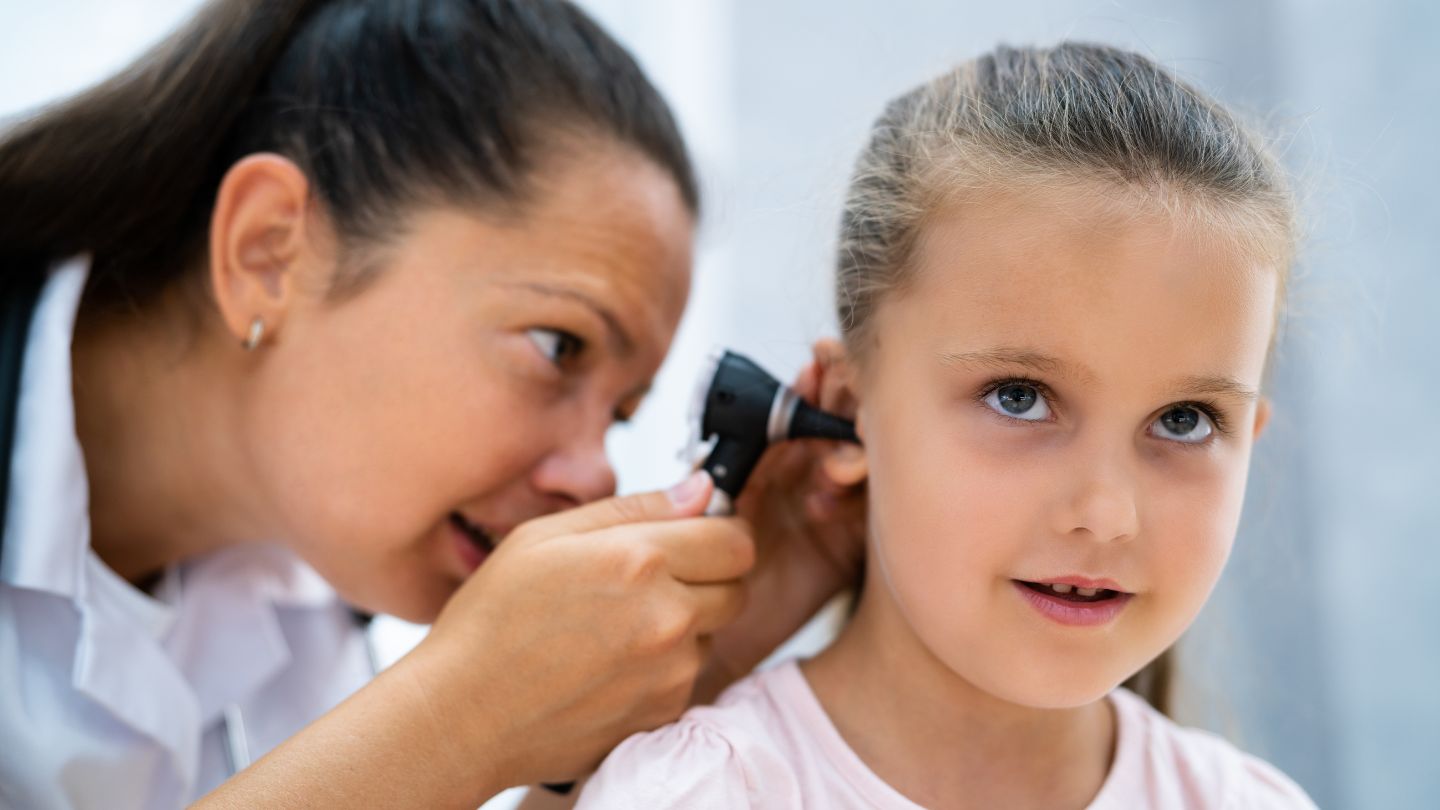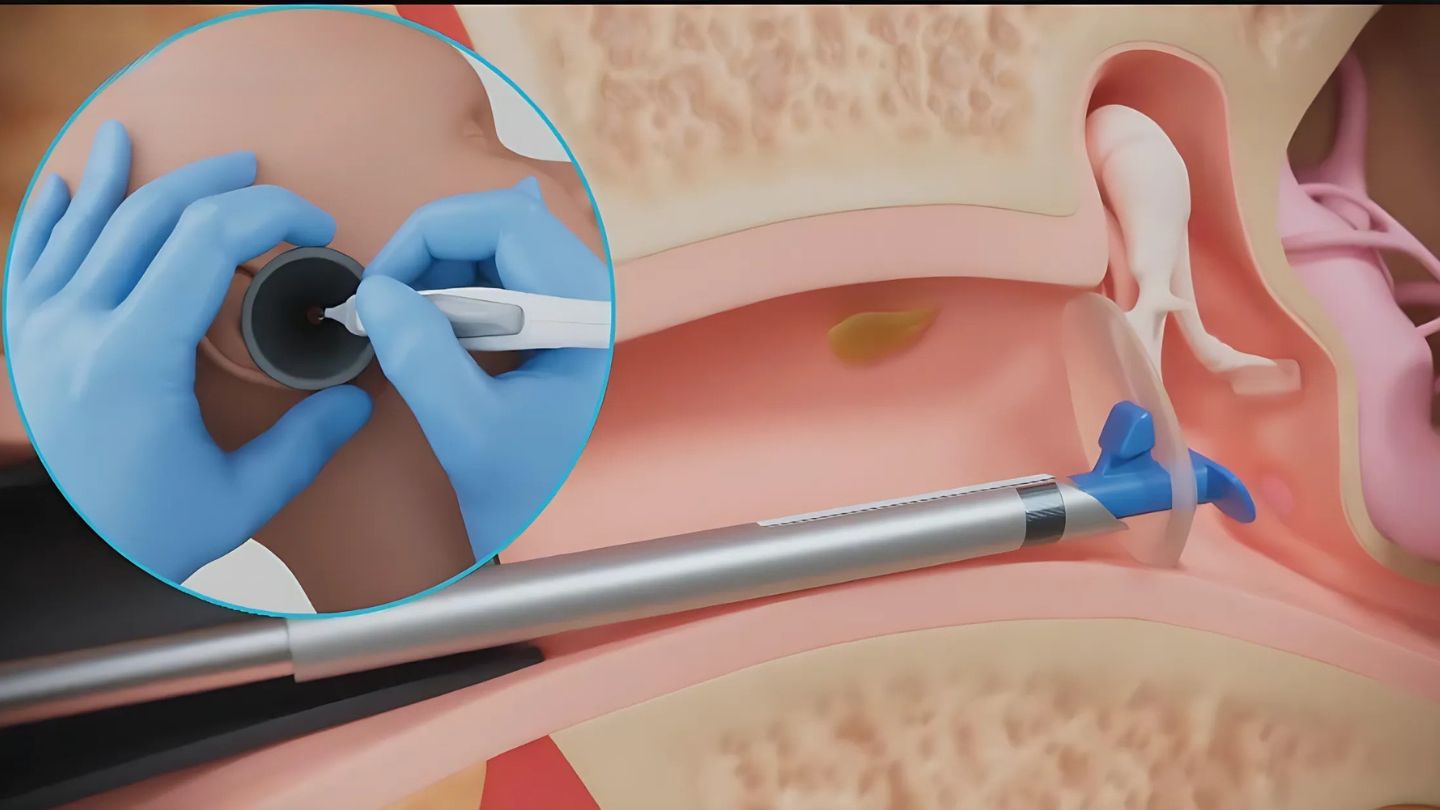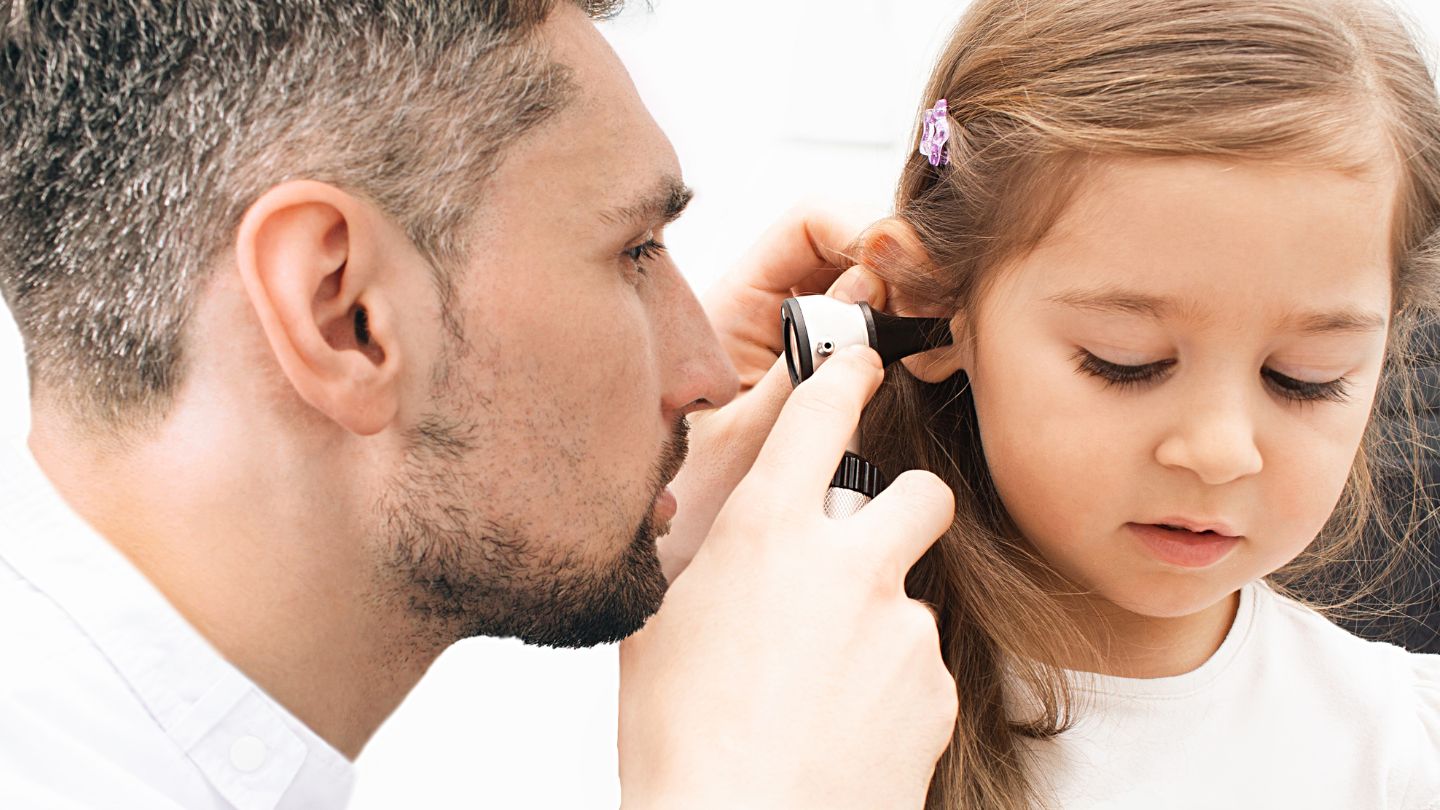When it comes to treating recurring ear infections or fluid buildup in children, ear tubes are a common solution. But did you know there are different types of ear tubes available? Hummingbird ear tubes are a newer, innovative option compared to traditional ear tubes. In this blog, we’ll explore the key differences between the two, helping you make an informed choice for your child’s ear health.
Key Takeaways
- Ear tubes are small cylinders placed in the eardrum to prevent fluid buildup and chronic ear infections, significantly improving children’s quality of life.
- The Hummingbird Tympanostomy Tube System offers a less invasive, in-office alternative to traditional ear tube surgery, eliminating the need for general anesthesia and reducing recovery times.
- Both traditional and Hummingbird ear tube placements are effective, but the Hummingbird system boasts a higher success rate, minimal complications, and lower overall costs, making it an attractive option for families.
Understanding Ear Tubes
Parents contemplating ear tube placement for their child should be knowledgeable about the function of ear tubes. These small cylindrical devices, which are inserted into the eardrum, serve to aerate the middle ear and avert fluid accumulation that could lead to repeated episodes of ear infections and additional issues. The Eustachian tube has a role in maintaining air pressure equilibrium and clearing fluid from the middle ear. When it fails to operate correctly, implanting ventilation tubes might be essential.
Typically, these tubes remain in situ for roughly 11 months before they naturally exit on their own accord. On occasion, though, if they don’t dislodge as anticipated, surgical intervention may become necessary for removal. Comprehending how these tubes function and their significance concerning auditory health is vital when determining what is best for your child’s needs.
What Are Ear Tubes?
Ear tubes, also known as tympanostomy tubes or PE tubes, are small, hollow cylinders made of plastic or other materials. These tubes are placed in the eardrum to help improve airflow and reduce fluid buildup in the middle ear, which can lead to frequent ear infections and hearing difficulties. Children may need to receive ear tubes to address these issues effectively.
Ear tubes ventilate the middle ear, preventing fluid accumulation that can harbor bacteria and cause infections. This simple solution can significantly improve a child’s quality of life by reducing ear infections and associated discomfort.
Why Are Ear Tubes Needed?
Frequent ear infections in children often necessitate the consideration of inserting ear tubes. These ongoing infections can interfere with daily routines, cause considerable discomfort, and have the potential to result in hearing loss if not properly managed. By allowing air to flow and fluid to drain while preventing bacterial proliferation, ear tubes effectively tackle issues related to Eustachian Tube Dysfunction.
If a child suffers from repeated instances of persistent or recurring ear infections, continuous fluid accumulation within the ears, or inexplicable pain in the ears, it could indicate that they are good candidates for having ear tubes placed. Warning signs such as recurrent bouts of fever and drainage from the ears underscore this need for surgical intervention.
Inserting these tubes is a critical step toward helping children regain equilibrium and comfort so they may engage freely in their usual activities without being hindered by constant infection-induced discomforts. Not only does it enhance their immediate quality of life, but it also lays the groundwork for healthier growth moving forward.
Traditional Ear Tubes Explained
Traditional ear tube surgery, recognized for successfully addressing ear infections, is usually conducted in the sterile environment of a hospital operating room. This approach has proven reliable for numerous families. It raises several issues and fears. The anxiety associated with surgical procedures, along with concerns about general anesthesia, extended recuperation periods, and considerable expenses tied to the operation, are common worries among parents.
Traditional ear tube surgery continues to be a prevalent and potent remedy for persistent ear infections and their complications. Being well-informed about both the surgical process itself and postoperative care can assist parents in preparing effectively and facilitating an uneventful recovery period for their offspring.
Procedure Overview
The installation of traditional ear tubes commences with a myringotomy, wherein the eardrum is delicately incised to enable the tube to be placed via a specialized instrument. This method alleviates pressure and facilitates drainage from within the middle ear. The entire process of inserting an ear tube requires general anesthesia and takes place in a hospital environment to ensure that children are safe and comfortable.
To prepare for surgery, patients may undergo specific preoperative evaluations and adhere to fasting instructions provided by their healthcare provider. The duration of this surgical intervention is typically brief, not exceeding 15 minutes on average. Due to the necessity for general anesthesia and its performance in a clinical setting, this procedure entails more complexities than other non-surgical options.
Parents can mitigate their concerns about traditional ear tube procedures when they understand what it entails. Recognizing that it ranks among some common pediatric surgeries performed underpins confidence in its routine nature as well as its efficacy and safety profile.
Recovery and Aftercare
Following conventional ear tube surgery, it is necessary to keep children under observation for a period ranging from 12 to 24 hours due to the lingering effects of general anesthesia. Typically, this entails an initial monitoring phase at the hospital lasting between 30 and 60 minutes after they come out of anesthesia before continuing their recovery at home for the remainder of the day. Throughout this duration, strict adherence to medical advice provided by healthcare professionals is critical in facilitating a smooth recuperation.
Post-surgery, there may be a prescription issued for antibiotic ear drops aimed at both infection prevention and promotion of healing. It’s important that parents stay alert for any issues, such as continuous ear drainage or obstructions within the tubes, as well as scarring on the eardrum itself. Arranging regular check-ups plays a pivotal role in assessing healing progression while verifying that tubes are securely positioned and operating correctly.
Despite potential obstacles along the way, traditional tube surgery related to ears leads to outcomes marked by safety and efficacy when accompanied by diligent postoperative management. Parents who remain knowledgeable about post-procedure care will be better equipped to diminish risks associated with recovery, thus helping ensure optimal health results following their child’s surgical experience.
The Hummingbird Tympanostomy Tube System
The Hummingbird Tympanostomy Tube System serves as a contemporary substitute for conventional ear tube surgery, facilitating swift and efficient in-office placement of ear tubes without necessitating a trip to the hospital. Being an FDA-approved device, it streamlines the procedure while minimizing its invasive nature.
In light of the fact that around 1 million children in the U.S. are fitted with pressure-equalizing tubes annually, there is a significant demand for adept solutions in ear tube placement. The capability of the Hummingbird system to offer such procedures within an office setting renders it a more convenient and less daunting choice for families.
How It Works
Designed to alleviate ear infections by draining surplus fluid and enhancing ventilation in the middle ear, the Hummingbird Tympanostomy Tube System is an innovative approach. It utilizes a specialized instrument that enables the doctor to incise and insert a tube in one seamless action, significantly optimizing the procedure.
The area is numbed with a topical anesthetic during the Hummingbird procedure, which obviates the requirement for general anesthesia. The distinctive device employed employs a single-pass mechanism that assures rapidity and efficiency throughout the entire process. Conducted within a clinical setting, this method precludes necessitating hospital admission and mitigates any related surgical environment stress.
Taking approximately 5 minutes on average to complete, this system stands out due to its swift nature of operation. This expedites not just procedural time but also grants children expedited resumption of their routine activities with minimal disruption impacting daily routines.
Benefits of the Hummingbird System
The advantage of utilizing the Hummingbird Tympanostomy Tube System is that it eliminates the need for general anesthesia, thereby diminishing both risks and emotional stress for not only the child undergoing treatment but also their parents. During this procedure, unlike conventional surgical methods, parents have the opportunity to stay by their child’s side to offer comfort and support.
Due to its minimally invasive approach, children are able to resume normal activities right after having undergone the procedure with no delay. This system streamlines care before and after surgery, which eases families into a more seamless recovery process while simplifying management throughout each stage of treatment.
Comparing Traditional Ear Tubes and Hummingbird Ear Tubes
The Hummingbird Tympanostomy Tube System offers a modern substitute for conventional ear tube surgery, aiming to be minimally invasive. The swift procedure that can be completed in an office setting is crafted to offer patients a more convenient option, considerably diminishing the difficulties and expenses typical of traditional surgical approaches. This method provides both parents and children with a quicker and less stressful experience by avoiding many of the hassles associated with surgeries performed in hospitals.
Thanks to its unique hummingbird device, the Hummingbird system presents an attractive alternative for families looking for efficient ear tube placement without undergoing extensive medical procedures. With its specialized hummingbird device at its core, this system facilitates streamlined in-office tube surgery that capitalizes on using the proprietary equipment designed specifically for these interventions.
Anesthesia Requirements
Traditional ear tube surgery requires general anesthesia, typically administered through a mask, to ensure the child remains still and pain-free during the procedure. This approach, while effective, carries inherent risks and necessitates pre-operative testing and fasting, adding to the overall stress and complexity of the surgery.
In contrast, the Hummingbird ear tube procedure only requires a topical numbing anesthetic, eliminating the need for general anesthesia and its associated risks. This significant difference makes the Hummingbird method a less invasive and safer option for many children.
Knowing the differences in anesthesia requirements helps parents make informed decisions about their child’s procedure. The reduced need for general anesthesia in the Hummingbird system can ease many parental concerns and provide a more straightforward, less stressful experience.
Procedure Time and Setting
The process of inserting an ear tube using the Hummingbird technique is usually completed in less than 5 minutes, which is significantly quicker than the time it typically takes for conventional surgical methods. The research underscores that this method consistently achieves such a swift placement within approximately 5 minutes, underscoring its expedience.
Clinical trials have shown that an impressive 98.7% of tympanostomy tube insertions utilizing the Hummingbird system were successfully performed in a physician’s office setting. This not only offers convenience but also improves comfort levels for patients by avoiding traditional surgery settings, thereby diminishing related stress.
Conversely, standard ear tube placements consume more time and require extra surgical steps conducted under general anesthesia. The availability of in-office procedures through the Hummingbird technology decreases both procedure length and the impact on daily life for children and their families alike.
Post-Procedure Care and Follow-Up
Following the placement of ear tubes in children, attentive post-procedure supervision and scheduled check-ups are essential to ensure positive outcomes. Observation for a duration of 12-24 hours is commonly required after traditional pediatric ear tube surgery due to anesthesia-related factors. Subsequent visits with healthcare providers should begin between two to four weeks post-surgery to evaluate the healing process and confirm that the tubes remain correctly positioned.
Ear tubes typically stay in place for anywhere from six months up to one and a half years before they naturally dislodge. Should ear tubes come out prematurely, it’s important for parents to promptly get in touch with their child’s otolaryngologist (ENT) doctor, who can determine if there is a need for another set of tubes.
To safeguard against future ear infections and preserve the child’s auditory health, regular monitoring through follow-up care is imperative. This continuous oversight assures that the ear tubes are functioning as intended, contributing significantly to maintaining the child’s overall wellness.
Immediate Aftercare
Following the placement of ear tubes, children might exhibit signs such as drowsiness or queasiness, especially if they were under general anesthesia during the process. Ear drainage, slight pain, and a feeling of itchiness are typical side effects after surgery. These should be observed but aren’t usually cause for concern.
After the procedure, it is essential to prevent water from entering the child’s ears while bathing or swimming and remain alert for any indications of infection. To aid in post-surgical care and minimize potential future infections, healthcare providers may prescribe antibiotic ear drops. It is crucial always to speak with medical professionals before administering any medications to children following an operation.
Ensuring that healing proceeds smoothly and that the tubes are functioning correctly requires attendance at follow-up appointments. The initial checkup typically takes place between two to four weeks following surgery. Additional periodic examinations will track progress over time. Post-Hummingbird procedure recovery. Allows kids to resume normal activities right away, although they may require a brief period—possibly one or two days—to fully acclimate themselves again.
Long-Term Monitoring
Consistent follow-up visits are crucial for observing the recovery process and verifying that the ear tubes are working effectively. These check-ups play a vital role in overseeing a child’s auricular health and confirming that the tubes are serving their purpose correctly.
Despite a child appearing to be in good condition, continuous supervision is necessary to identify any indications of possible ear infections. Scheduled appointments with an ENT specialist facilitate early detection and swift intervention of any complications, thereby aiding in maintaining the child’s auditory wellness and contributing positively to their overall health and development.
Choosing the Right Option for Your Child
It is essential for the health of your child to make a knowledgeable choice regarding ear tube placement. Parents who are fully informed can balance the advantages and potential dangers of various procedures, guaranteeing that they select the most suitable course of action tailored to their child’s unique health requirements.
Seeking advice from board-certified experts who concentrate on treating pediatric patients can lead to proficient and empathetic care for your child. These specialists are equipped to assist parents through the process of making an informed decision about their child’s treatment options.
Factors to Consider
Parents should take into account various elements when considering ear tube surgery for their child. It is usually most appropriate to undergo this procedure between the ages of 1 and 3 while being mindful to inform the doctor of any underlying health issues or allergies that may exist. Recognizing how such a surgery can diminish the occurrence of ear infections is crucial as well.
The decision-making process surrounding ear tube placement can be fraught with parental anxiety about potential risks and advantages. Availing oneself of educational resources and engaging with online support networks can offer substantial insights and assistance, enabling parents to make educated choices regarding their child’s health management.
Consulting with Pediatric ENT Specialists
For parents contemplating the option of ear tubes for their child, it is advised to first consult with a specialist in pediatric ENT (ear, nose, and throat). Engaging in initial conversations with an ENT expert can shed light on whether ear tubes are necessary for their child while also evaluating their auditory health through detailed examinations.
To assess the condition of a child’s ears and determine if there’s a need for ear tubes, pediatricians might employ tests such as audiograms and tympanograms. It’s important to note that some insurance plans necessitate having a referral before scheduling an appointment with a pediatric ENT specialist. Hence, parents should verify this requirement with the healthcare facility to understand any specific protocols they need to follow.
Seeking information from educational materials and participating in online forums dedicated to support can be instrumental for parents during the decision-making process by providing them additional insight and comfort. Receiving professional advice from specialists guarantees that parental decisions are informed by expertise uniquely catered toward meeting their child’s individual health needs.
Summary
Hummingbird Ear Tubes bring significant advancements compared to traditional ear tubes, offering minimally invasive placement, reduced surgical risks, and quicker recovery times. These differences make them a groundbreaking option for families seeking safer and more efficient solutions for their child’s ear health. While traditional ear tubes remain effective, the innovations found in Hummingbird Ear Tubes highlight a new level of convenience and care for ear treatment.
If you are considering Hummingbird ear tubes for children in Atlanta, Alpharetta, Duluth, or Marietta, we encourage you to explore the expert services offered by Pediatric Ear Nose and Throat of Atlanta, P.C. Our team is dedicated to delivering compassionate, child-focused care that ensures your little one’s comfort and healing. Together, we can help provide the advanced solutions your child needs to thrive.
Frequently Asked Questions
What are the key differences between Hummingbird ear tubes and traditional ear tubes?
The primary difference lies in the procedure and setting. Traditional ear tube surgery requires general anesthesia and is performed in a hospital setting, while the Hummingbird Tympanostomy Tube System is an in-office procedure that uses a topical anesthetic. The Hummingbird system is faster, less invasive, and eliminates the risks associated with general anesthesia.
What are the benefits of the Hummingbird Tympanostomy Tube System?
The Hummingbird system offers several advantages, including quicker procedures completed in less than five minutes, no need for general anesthesia, reduced recovery time, and the ability for parents to stay with their child during the process. This method provides a convenient and less stressful option for families compared to traditional surgery.
Are there differences in anesthesia requirements for Hummingbird and traditional ear tube procedures?
Yes, traditional ear tube surgery requires general anesthesia to ensure the child remains still and pain-free during the procedure. On the other hand, the Hummingbird system uses only a topical numbing anesthetic, avoiding the risks and stress associated with general anesthesia.
What is the post-procedure care like for both types of ear tubes?
Following traditional ear tube surgery, children need to recover from general anesthesia, which may require monitoring for 12-24 hours. Antibiotic ear drops are often prescribed, and parents need to watch for signs of infection or complications. For the Hummingbird system, recovery is swift with minimal downtime, allowing children to resume normal activities almost immediately. Regular follow-up appointments are essential in both cases to ensure proper healing and functioning of the ear tubes.











